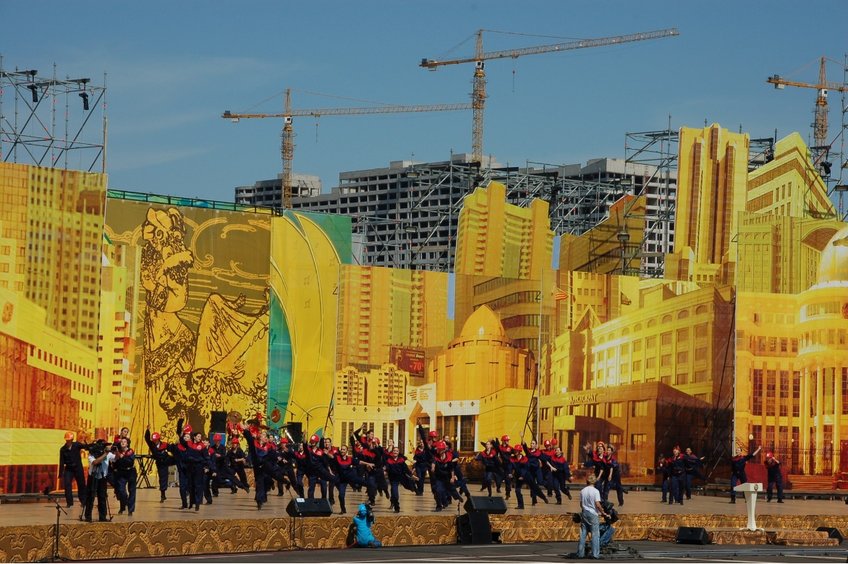‘City of the Future’: Built Space and Social Change in Astana, Kazakhstan
Conducted between 2007 and 2012, with thirteen months’ continuous field research in 2008 2009, this project was an ethnography of the mutually entangled dynamics of social and architectural change in Astana, the capital city of Kazakhstan. It studied the emergence, integration, contestation, and active maintenance, often against formidable challenges, of social assemblages, subjectivities, and relations at a time of rapid transformation to the built environment. These processes were situated in the context of past and present ideologies of modernization and visions of a better future. Seeking to reconcile materialist and social-constructivist approaches, the project emphasized the role of space in social dynamics. I argue that the government-coordinated construction boom in Astana in the 2000s—which saw an expansion of the city territory, the building of a spectacular new cityscape, and mass-migration leading to an almost threefold increase in the city’s population within a decade—both enabled and constrained multiple processes of cultural ordering of social relations and production of identities.
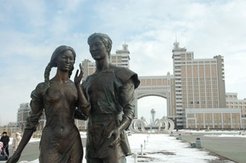
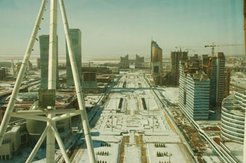
Following the collapse of the Soviet Union, which created an independent Kazakhstani statehood in 1991, the capital of Kazakhstan was relocated in 1997 from Almaty to what is today Astana, in the centre-north of the country. There, amid the steppe, a post-Soviet political regime, allied with national as well as international corporations, embarked on a project of creating an exemplary capital, a “city of the future” as it was often claimed in official publicity in Kazakhstan. Considering the historical and socio-political contexts of the Kazakhstani capital relocation and analyzing current official ideology, I examine the role of construction work in state- and nation-building agendas. I discuss how official visions of urban modernity catalyze hopes and anxieties among citizens and trace how the materiality of built forms and the aesthetics of space work to structure social relations, subjectivities, and political imaginations.
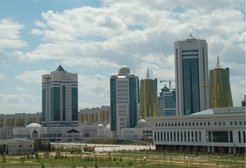
The nexus of aesthetic, moral, and temporal ideas materialized in the changing cityscape of Astana is connected to the dynamics of collective identification and individual subjectification. Subjectivities emerge through everyday embodied performances (Butler 1990), within webs of publically circulating, and often contested, symbols and categories. I focus ethnographically on several personal accounts of migration to Astana. Those narratives highlight the notions of ‘urbanity’ associated with imaginings of ‘modernity’, and ‘rurality’ linked to spaces of national ‘intimacy’ (Herzfeld 2005). These notions connote performative corporeal styles, overriding other categories of identification (Donahoe et al. 2009), such as ethnicity or class. My argument works to extend understandings of identity politics in the former Soviet Union, which have focused overwhelmingly on ethnic and national categories.
Exploring the entanglements of individual subjectivity, social aggregates, and the materiality of built forms, and focusing on Soviet-era residents of the city (prior to the capital relocation, today’s Astana existed as an industrial city of 250 thousand inhabitants, known for most of its Soviet-era history as Tselinograd), I study how collective maintenance work in a Soviet-era apartment block contributes to the dwellers’ constitution as social subjects. I examine how broader politico-economic transformations translate into those residents’ immediate experience. I argue that nostalgia and irony allow residents to construct an alternative ground for collective belonging in the face of change and official ideological production which they may find alienating. Expanding on Michael Herzfeld’s ‘cultural intimacy’, I propose to term that work of irony and nostalgia ‘spatial intimacy’.
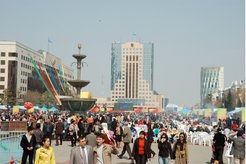
Further, my research examines the changing uses and meanings of selected public spaces in the city under socialist and post-Soviet market-oriented regimes. My ethnography shows how remaining Soviet-era residents refrain from participation in official spectacles in city squares and instead nostalgically reconstruct socio-spatial relations of the Soviet period. Simultaneously, I argue that shopping malls unexpectedly emerge as venues where a tacit politics of corporeal signification shapes what it means to be urban and modern. This aspect of my research invites a rethinking of the concept of ‘public space’ as recently discussed in scholarly literature (Amin and Thrift 2002; Boyer 1994; Habermas 1991; Low 2000).
Finally, my project offers an unusual ethnographic perspective on the cultural politics of urban space: focusing on the game Encounter played by young people in Astana, I highlight the indeterminacy inherent in the socio-cultural dynamics of space. As documented in my research, the game by staging surrealistic scenes out in the streets, plazas, and industrial ruins of the city creates stark aesthetic contrasts, destabilizing conventional values and meanings inscribed in built form. Moreover, it allows the formation of autonomous socialities, wherein notions and values of urban belonging are negotiated on unexpected terms.
In sum, this research demonstrates the continuing significance of collective ‘expectations of modernity’ (Ferguson 1994), beyond what has been termed, with reference to the collapse of the Soviet Union, ‘the passing of mass utopia’ (Buck-Morss 2002). Multiple visions of modernity are produced in Astana and invested with affective charge, shaping and supporting state-building politics as well as personal life projects. Space, architecture, and infrastructure are critically important elements in the articulation and contestation of these competing imaginings, pointing to the complex, at once material and ideational structure of social reality.
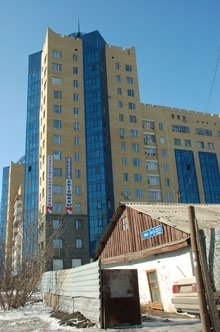
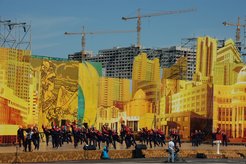
Moreover, my research shows how in Astana the production of space (Lefebvre 1991), confronted with the plurality of everyday place-making practices (De Certeau 1984), enables divergent, sometimes mutually contradictory, processes of cultural arrangement of social relations. Some are concurrent to official ideology, but others allow for circumvention or provide critical alternatives. ‘Always under construction’, ‘never finished, never closed’ (Massey, 2005: 9), space supports indeterminacy in sociocultural processes. The spatial formation of the social, which always parallels the social formation of space, turns out far more contingent, indeterminate, open-ended, and pluralistic than planners and rulers might assume. Social life is not easily ‘enframed’ by dominant spatial strategies—pace Timothy Mitchell (1991)—nor are such spatially established frames effortlessly stable. The openness of space is the basis for multiple potentialities of sociocultural creativity. Thus, as I demonstrate, the production of space in Astana does not determine the direction of social change; rather, it opens up fields for multiple experiments in transformation and preservation of contingent order. In political terms, space-making may be and often indeed is a strategy of domination, but it is also much more: it enables the articulation of difference and the formation of various social subjectivities in the present and the future.
The project resulted in several publications, including peer-reviewed journal articles, and a PhD dissertation defended summa cum laude in October 2012 at Martin-Luther-Universität, Halle‑Wittenberg.
References
Amin, Ash and Nigel Thrift
2002 Cities: Reimagining the Urban. Cambridge: Polity.
Boyer, M. Christine
1994 The City of Collective Memory: Its Historical Imagery and Architectural Entertainments. Cambridge, Mass. and London: The MIT Press.
Buck-Morss, Susan
2002 Dreamworld and Catastrophe: The Passing of Mass Utopia in East and West. Cambridge, Mass.: The MIT Press.
Butler, Judith
1990 Gender Trouble: Feminism and the Subversion of Identity. New York: Routledge.
De Certeau, Michel
1984 The Practice of Everyday Life, trans. S. Rendall. Berkeley: University of California Press.
Donahoe, Brian et al.
2009 ‘The Formation and Mobilization of Collective Identities in Situations of Conflict and Integration’, Working Paper No. 116. Max Planck Institute for Social Anthropology: Halle/Saale.
Ferguson, James
1999 Expectations of Modernity: Myths and Meanings of Urban Life on the Zambian Copperbelt. Berkeley: University of California Press.
Habermas, Jürgen
1991 The Structural Transformation of the Public Sphere: An Inquiry into a Category of Bourgeois Society, trans. T. Burger and F. Lawrence. Cambridge, Mass.: The MIT Press.
Herzfeld, Michael
2005 Cultural Intimacy: Social Poetics in the Nation-State, 2nd ed. New York: Routledge.
Lefebvre, Henri
1991 The Production of Space, trans. D. Nicholson-Smith. Oxford: Blackwell.
Low, Setha M.
2000 On the Plaza: The Politics of Public Space and Culture. Austin: University of Texas Press.
Massey, Doreen
2005 For Space. Los Angeles: Sage.
Mitchell, Timothy
1991 Colonising Egypt. Berkeley: University of California Press.





